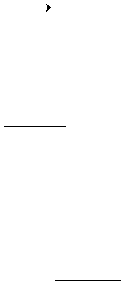
F-2
There is, however, an indirect method for determining the iodine concentration in aqueous solution. Once
the iodine concentration is known, you can calculate the triiodide concentration in water. This indirect
method depends on the fact, that the molecular iodine (I2) is much more soluble in dichloromethane
(CH2Cl2) than it is in water. The ions I
-
and I3
-
are very soluble in water but are not significantly soluble in
dichloromethane. Also, CH2Cl2 and water are immiscible.
Suppose an aqueous solution of I
-
, I2, I3
-
was prepared by adding I
2(s)
to an aqueous solution of I
-
. If
some of this (I
-
(aq)
, I
2(aq)
, I3
-
(aq)
) solution was put into an Erlenmeyer flask along with some CH2Cl2, two
immiscible layers will result with the CH2Cl2 layer on the bottom since CH2Cl2 is 1.33 times denser than
water. Of the three species in the aqueous layer, only molecular iodine (I2) is significantly soluble in
CH2Cl2. It will be drawn from the aqueous layer into the CH2Cl2 layer until the following distribution
equilibrium is established:
I
2(aq)
I
2(CH2Cl2)
(3)
The equilibrium constant for Eq.(3) is called the distribution ratio, and describes the ratio of iodine
concentration in dichloromethane to that in water:
K’ =
[I2
(CH2Cl2)
]
[I2
(aq)
]
= 1.50 x 10 ²
(4)
Since the iodide and triiodide ion concentrations in CH2Cl2 are negligible, you can readily determine the
concentration of iodine in CH2Cl2, because essentially all of the iodine in CH2Cl2 is present as I2. By
rearranging equation (4), the concentration of iodine in the aqueous layer can be determined from:
[I
2(aq)
] =
.
150
I
2
2
Cl
CH
]
[
)
(
2
(5)
Since the I
2(aq)
and the I3
-
(aq)
are in the same volume of aqueous solution, a titration of an aliquot of the
aqueous layer will give the total concentration of I
2(aq)
and I3
-
(aq)
combined,
i.e. [I2+I3
-
]. Hence, subtraction of [I
2(aq)
] obtained from equation (5) from the total concentration of I
2(aq)
and I3
-
(aq)
in water ([I2 + I3
-
]) gives [I3
-
]:
[I3
-
(aq)
] = [I
2(aq)
+ I3
-
(aq)
] - [I
2(aq)
]
(6)
Finally, the equilibrium concentration of I
-
(aq)
remaining in the aqueous solution must be determined. It is the
difference between the initial concentration of I
-
used to prepare the original I
-
(aq)
, I
2(aq)
, I3
-
(aq)
aqueous
